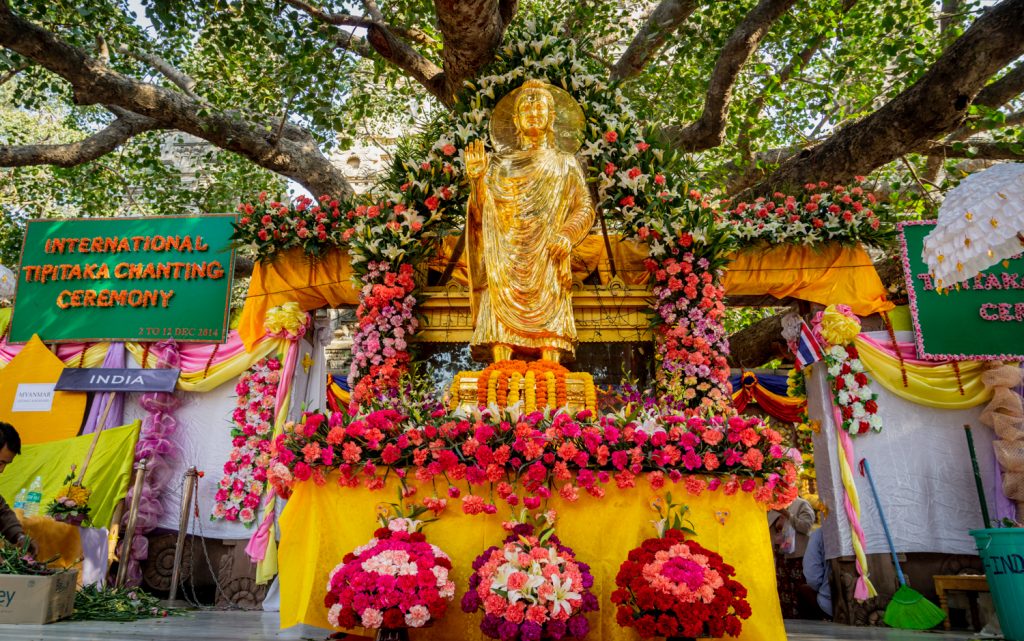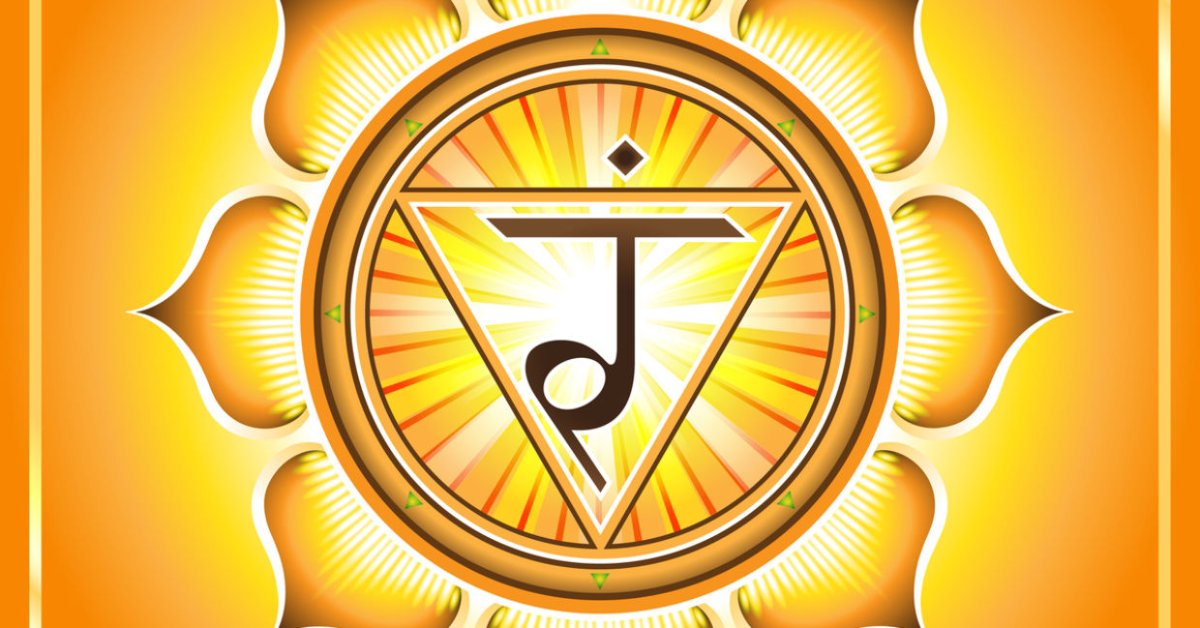Understanding Self Power & Other Power
Mark Unno explains how giving ourselves over to other power, an idea central to Asian Buddhist thought, can lead us to awakening. The post Understanding Self Power & Other Power appeared first on Lions Roar.

Meditation, largely understood to be powered by one’s self, is covered as the dominant practice paradigm in the West. But what about powers that need not be generated, but received? (Hint: It needn’t be an either/or proposition.) Mark Unno explains how giving ourselves over to other power, an idea central to Asian Buddhist thought, can lead us to awakening.
“Departure,” 1952. Painting by Agnes Pelton. Oil on canvas, Private Collection. Peter Palladino/The Agnes Pelton Society. Bridgeman Images.
In recent decades, self-compassion has emerged as a counterpoint to self-esteem in the field of psychology. We all need social recognition for our achievements—this forms the basis for much of our self-esteem—but overreliance on such recognition can lead to a fragile, brittle sense of self, subject to the opinions of others. Self-compassion, in contrast, involves being kind to oneself regardless of external outcomes and recognition. It is qualitative rather than quantitative and helps affirm the self with the qualities of warmth, kindness—compassion.
Yet, in practice, self-compassion also has limitations: it can be challenging to muster up our sense of self-compassion, especially when things are hard, and thus, when we need that compassion the most. But what if we realized that that compassion is always there, not something we have to conjure but waiting for us, to receive us with warmth and compassion?
What if we realized that that compassion is always there, not something we have to conjure but waiting for us, to receive us with warmth and compassion?
There is something similar that has been a part of Buddhist tradition for much of its history. It eventually came to be known as other power, in contrast to self-power practices or self-directed attempts at gaining recognition for advancing practice or even for generating the root of good in practice, such as the practice of generating bodhicitta, the mind of aspiration for awakening. This dynamic of self power and other power has been an oft-overlooked dimension of Buddhism in the West but has been foundational to much of Buddhism in Asia.
Devotional and Meditational Practices, East and West
In Asia, the vast majority of Buddhists engage in what have been called devotional practices. These include chanting, making offerings, and bowing to buddhas, bodhisattvas, and deities. When such practices are done in relation to ordained monks or nuns, or Buddhist masters, those ordained are often revered as representatives, incarnations, or embodiments of cosmic or celestial deities. Such is the case, for example, with His Holiness the Dalai Lama, considered by large numbers of Tibetans to be the incarnation of the bodhisattva of compassion, Avalokitesvara. While there are also Westerners who regard the Dalai Lama as an incarnation of Avalokitesvara, there are many who simply regard him as a great spiritual leader, a human spiritual leader, not a cosmic incarnation. And, although Western Buddhists may also engage in devotional practices, what has gained more attention in our media culture are what have been called meditative practices, especially silent seated meditation, and in particular mindfulness-based practices, which have received widespread attention beyond Buddhist institutions in the form of secularized mindfulness practices like Mindfulness-Based Stress Reduction, originated by Jon Kabat-Zinn.
In comparing Asian and Western forms of Buddhist practice, it can be helpful to think about the relation between “self power” (Jpn. jiriki) and “other power” (tariki) practices. Self power denotes those based on the effort and intention directed by the self, i.e. the human self as practitioner, and other power denotes those deriving from the power of buddhas, bodhisattvas, and other celestial deities, i.e. power other than human. The language of self- versus other-power is derived from the language of Pure Land Buddhism, originating in the Chinese thought of Tanluan (476–542), who, under the guidance of the great scholar-monk Bodhiruci (~sixth century), abandoned his previous path of various philosophical studies, meditative methods, and incantations and gave himself up to the other-power practice of invoking the Name of Amida Buddha, the Buddha of Infinite Light. This practice became widespread in Japan through the work of such figures as Honen (1133–1212), founder of the Jōdo-shū or Pure Land school, and Shinran (1173–1262), founder of the Jōdo Shinshū, or Shin Buddhism, the largest school of Buddhism in Japan.
Shinran is well-known for his statement, “I abandoned the various [self-power] practices and entrusted myself to the Primal Vow of Amida Buddha.” In other words, he abandoned various meditational and other self-directed efforts at attaining awakening and gave himself over to the cosmic power of Amida Buddha. The culmination of this is Shinran’s emphasis on the practice of invoking or chanting the Name of Amida Buddha: Namō Amitābha Buddha in Sanskrit, and Namu Amida Butsu in Japanese. “Namu” refers to the practitioner who is filled with attachments and blind passions. Amida Butsu is Amida Buddha, not a static being but the dynamic reality of awakening, or the Awakening of Infinite Light. Thus, Namu Amida Butsu means “I, this foolish being filled with blind passions, entrust myself to the awakening of infinite light.”
Shinran is not the only one to invoke the power of cosmic buddhas and other celestial deities; this has been widespread throughout the history of much of Buddhism. In the early Buddhism of the Pali canon, there are such figures as Metteyya (Maitreya), who awaits in the Tusita Heaven until the next dharma age, and Brahma Sahampati, the deity who successfully implores Siddhartha to go forth and teach in order to alleviate the suffering of all beings. However, it is with the development of Mahayana Buddhism and then Vajrayana Buddhism within Tibet that we see cosmic deities take center stage.
In Tibetan Buddhism, many great masters are regarded as incarnations of buddhas and bodhisattvas, and a wide variety of practices from deity yoga to mahamudra invoke their power, with practitioners engaging in practices of visualizing deities, regarding their masters as divine incarnations, or otherwise invoking the power of cosmic deities, such as through chanting mantras. One way to understand why practitioners invoked the power of cosmic buddhas and bodhisattvas is that it allowed for the practice of “letting go” into the larger reality of buddhanature, a cosmic truth, in a way that many practitioners found difficult to do relying solely on the power of conscious intention.
In East Asia, most schools of Buddhism identify a scriptural basis for their lineage, each with their own cosmic buddha at the center of these scriptures or sutras: Amitabha and Amitayus for the Pure Land, Mahavairocana for the Huayan and Zhenyan (Jpn. Shingon), and Sakyamuni Buddha on a cosmic scale for the Lotus Sutra-based schools such as the Chinese Tiantai and Japanese Nichiren schools. Even Zen Buddhism, which is sometimes taken as discarding the authority of the sutras, regularly invokes the power of Bodhisattva Avalokitesvara (Ch. Guanyin; Jpn. Kannon) through chanting the Heart Sutra, and in the Zen meditation hall, or zendo, one finds a statue of the Bodhisattva Manjusri, the deity of nondual wisdom.
Human Body, Buddha Body
What are we to make of cosmic deities in highly secularized Western cultures, where secular mindfulness-based practice is prized, Vipassana retreats de-emphasize the element of devotion to cosmic deities, and Zen practice is often conducted with no statue of Manjusri present, or even a natural stone in his place? To explore this question, it can be helpful to understand the philosophical framework within which these deities find expression.
Although there are deities in the Pali Canon, it is with the emergence of the Mahayana that theories concerning the status, nature, and function of deities become formalized. Specifically, buddhas are understood to be based on the dharmakaya, or buddha-body. (Literally, “Dharma body” or the embodiment of the Buddhist truth.) All buddhas are based on the formless dharmakaya, the body of truth beyond, and even before, words.
This correlates directly with the central Mahayana Buddhist teaching of emptiness, sunyata. Emptiness is one aspect of the twofold truth of conventional truth and highest truth. It is called “twofold” because they are not two separate truths but more like two sides of the same coin. Conventional truth is the truth expressed in words, ideas, concepts. Thus, it is true to say that a tree has a trunk, branches, and leaves, that leaves are green and may turn color in the fall, and that trees live through photosynthesis.
At the same time, according to the highest truth, one needs to “empty” the mind of any fixed ideas about what one thinks a “tree” is or should be, let ideas fall away, until, deep in meditation and contemplation, one allows the self to merge with the tree, to become “one” with the tree, to become the tree. This is akin to what the famous photographer Minor White states: “When you approach something to photograph it, first be still with yourself until the object of your attention affirms your presence. Then don’t leave until you have captured its essence.” There is a sense of intimacy and oneness between subject and object that goes beyond words in the realization of emptiness that is difficult to attain as long as one is “thinking about” the object. Yet, this does not mean one abandons words altogether. Rather, words take on a new meaning once one has had the experience of emptiness and oneness. Just as the word “lover” takes on an entirely new meaning once one has had the experience of being in love, the world appears illuminated in an entirely different way once one has realized oneness with the cosmos. The world does not disappear; it becomes ever more vivid as one feels one’s deep connection with everything: the trees, flowers, and grasses; the sun, moon, and stars.
Experientially, in Buddhist practice we are constantly shifting between these two poles or levels — the conventionally constructed self of form, and the deeper cosmic truth of emptiness and oneness.
Emptiness/oneness does not have any characteristics of its own: no shape, color, taste, sound, or texture. Since it is beyond words, the qualities that differentiate one thing from another are absent in deep immersion in emptiness, in the deep flow of the oneness of reality. Yet, when we are released from our attachments and the suffering they cause, and let go into this flow of emptiness, we experience tremendous release and liberation. There can be great bliss and joy.
In the theory of the trikaya, or three bodies, there are three levels or layers to the body of the buddha, the embodiment of awakening:
The first of these is the nirmanakaya, the impermanent body of change, that is, the human body that is born, matures, falls ill, decays, and dies. The second is the sambhogakaya, the buddha body of bliss. This represents the experience of release, bliss, and joy, that is, the stage of letting go into emptiness and oneness. The ultimate kaya, dharmakaya, the body of truth, is the body of emptiness, the embodiment of oneness. Thus, within each of us is the potential to realize all three levels of the buddha-body: the nirmanakaya, the finite human body that changes over time; the sambhogakaya, the body that lets go of attachments and experiences the bliss of compassionate liberation; and the realization of emptiness, the ultimate dharmakaya as the body of truth.
This is expressed in terms of cosmic buddhas. The practitioner releases into the deep flow of oneness, of profound samadhi, or cosmic meditative awareness. In such moments, the center of awareness shifts from that of the finite individual in a limited human mind and body to the all-encompassing awareness of boundless compassion and nondual wisdom. Yet, one cannot remain on that plane forever and must return to the finite realm of the nirmanakaya. However, because we are so used to identifying ourselves with these four limbs, a head, and torso, we forget that we are all one interconnected, unfolding whole. Deep within we have always been, are, and will be that cosmic whole, but we habitually overidentify with one particular manifestation, with a specific hair color, nose shape, height, and the like.
This idea that “I” am this particular something is, from the perspective of emptiness and buddhanature, a dream-like illusion, a momentary apparition, like a mirage, references that are indeed found throughout Buddhist scripture. Experientially, in Buddhist practice we are constantly shifting between these two poles or levels—the conventionally constructed self of form, and the deeper cosmic truth of emptiness and oneness. This deeper truth, the dharmakaya, is expressed in terms of cosmic buddhas and bodhisattvas: Amitabha Buddha, the Buddha of Infinite light; Mahavairocana Buddha, the sun-like Buddha of brilliant illumination. Even Sakyamuni Buddha is expressed in cosmic, virtually eternal terms, as found in the Lotus Sutra, one of the most popular scriptures of Mahayana Buddhism, where the historical buddha takes on cosmic proportions. Bhaisyajaguru Buddha is the medicine buddha, or great healing buddha. This buddha likely has its origins in one of the epithets or nicknames of the historical Buddha Sakyamuni, the “Great Physician.” Thus, cosmic buddhas can be cosmic expressions of the human buddha who manifests the all-encompassing nature of awakening.
We also see this in the story of Amitayus Buddha, the Buddha of Eternal Life. In the Mahayana Buddhist scripture, The Sutra of Eternal Life, this Buddha begins his journey as a human king who undertakes the quest for enlightenment. In order to do so, he becomes the bodhisattva Dharmakara, who vows to create a buddha-realm, an ideal land where all beings will immediately attain liberation: the land of bliss, Sukhavati, which later comes to be known as the Pure Land. This story has resonances with the story of the historical Buddha, who begins his life as a prince, renounces his throne to go on his quest for awakening until he becomes Sakyamuni Buddha, and goes on to create his sangha—the community of enlightenment, of monks, nuns, and eventually lay people as well.
In terms of the relation between Buddhist practice based on human intention—self power—and that based on the cosmic power of the dharmakaya, or the emptiness-oneness as the spontaneous expression of cosmic truth beyond human intention—other power—it can be helpful to think a bit more about the nature of the self itself. For example, in some views of the psychological self, each person is regarded as having an individual mind, or one mind per one body, one nirmanakaya. Within Mahayana Buddhism, all beings including human beings are ultimately self-expressions of the dharmakaya and of its cognate, pratitya-samudpada, or interdependent co-origination. That is, the true self is the cosmic self of interdependence, emptiness, and oneness. Although the finite self of the nirmanakaya exists on the plane of conventional truth, the deepest, truest self is the self of emptiness and cosmic oneness. This self is beyond human calculation, the reach of dualistic thinking, beyond words.
Many Minds, One Mind, No Mind
Seated meditation, chanting, bowing, listening to the dharma—when one tries to master all of these different practices, it can be very difficult, especially for beginners, since there is so much to learn. One often finds that the mind, while attempting to practice, is of many minds, quite scattered.
Eventually, over time, as one learns these practices, the mind settles down. Especially helpful in this process are practices centered on achieving deep meditation, samadhi or dhyana; one-pointed concentration, samatha; or deep mindfulness, the realization of “One Mind.” Mindfulness-based practices often emphasize the realization of this deep attention, this One Mind. In some schools, such as Zen Buddhism, there is a letting go of even this “one mind,” to realize mushin, No Mind, the mind of nothingness. (We often hear of this in relation to Zen’s mu-koan.) The Zen master Dogen called this “dropping off body-mind, body-mind dropping off.” That is, one gives up the whole self to the universe itself, letting go completely! “Just let go of body and mind completely,” Dogen taught, “throwing oneself into the realm of the Buddha. Then practice unfolds from the side of the Buddha, enabling one to follow naturally, without any force or conscious effort, at which time one is released from samsara and attains awakening.”
The Turning of the Three Vows
Shinran, the founder of Shin Buddhism, calls this the “turning of the three vows” (Jpn. Sangan tennyu), from three of the Forty-Eight Vows ascribed to Amida Buddha, representing the primal power of the dharmakaya of emptiness to unfold through the human practitioner. These are the vows that Amida Buddha fulfilled at the “primal” stage of bodhisattvahood to realize cosmic awakening. (Here, “primal” has the meaning of both “initiating” and “foundational,” as the Vow of Awakening is itself the impetus and basis for the spontaneous realization of emptiness / oneness.) Of the Forty-Eight Vows ascribed to Amida, Shinran focuses on these three: the Nineteenth as the Vow of Various Practices, the Twentieth as the Vow of Oneness, and the Eighteenth as the Primal Vow of Other Power, of entrusting the self to the cosmic power of emptiness/oneness. When the practitioner finds the mind is too scattered in pursuing various practices, she may then seek the realization of deep oneness, which then gives way to giving up the self to the cosmic truth of the dharmakaya beyond, or even before, words. This is the deepest, truest self. Thus, other power is not another being, rather, it is “other than ego,” where the ego- or conscious-self turns out to be illusory.
In Shin Buddhism, one seeks to do all the good in the world, exerting conscious effort, or self power. When one reaches the limits of self power, one seeks the concentrated attention of realizing oneness, but this is still based on conscious human intention. This, too, has limitations. When one reaches the limit of dualistic, human intention, one gives this limited self over to, or entrusts oneself to, the power of boundless compassion, diving into the ocean of light of limitless awakening. Amida Buddha, the Buddha of Infinite Light, is not some being outside the self, “out there,” but turns out to be even more intimate to the self than what the self imagined itself to be: the ego-projection of expectations, self-image, that social media profile photo that appears ten years younger!
You Are the Music
As noted earlier, the core practice of Shin Buddhism is invoking or chanting the Name of Amida Buddha, Namu Amida Butsu, “I, this foolish being, entrust myself to the awakening of infinite light.” Yet, in following the three turnings—many minds, one mind, no mind; Nineteenth, Twentieth, and Eighteenth Vows—it turns out that the chanting is not carried out by the merely human practitioner with dualistic intention but arises spontaneously as the voiceless voice of the dharmakaya, and is received by the practitioner who is illuminated, enveloped, and dissolved into the deep flow of the oneness of reality, of Amida’s boundless compassion.
The Name of Amida Buddha, rather being something one chants, turns out to be that which one hears: listening deeply, hearing deeply. As the poet T. S. Eliot suggests, it is like “music heard so deeply, it is not heard at all, but you are the music, while the music lasts.” Only then does one realize that, as Shinran states, the “meaning of saying the Name of Amida Buddha is no meaning. It is inexplicable, ineffable, inconceivable.”
Buddhist practice, if it is to be something more than psychological, not just carried out by finite minds in limited bodies but rather in service of the realization of a cosmic truth, a cosmic reality, may require that one realize the limits of self power and begin entrusting the finite, illusory, limited self to the deepest truth of other power, the power that is other than ego. As the illiterate clogmaker, poet, and Shin devotee Saichi Asahara sang, “In other power, there is neither self power nor other power. There is only other power.”

 ShanonG
ShanonG 

























.jpg&h=630&w=1200&q=100&v=6e07dc5773&c=1)






